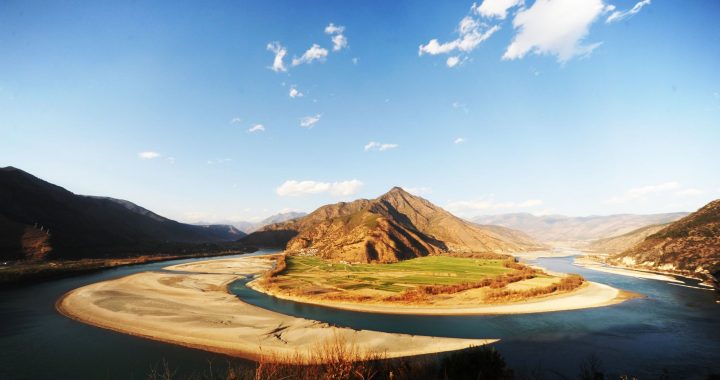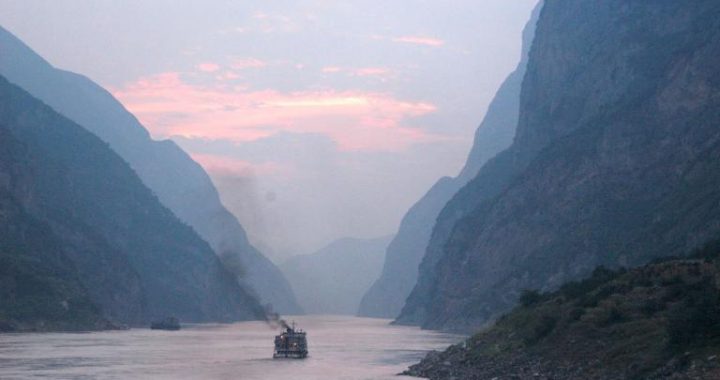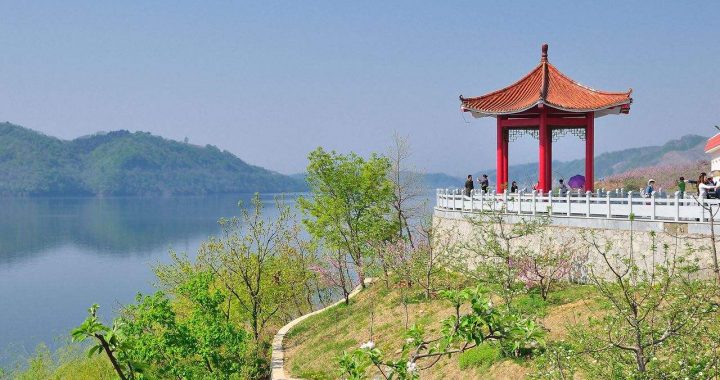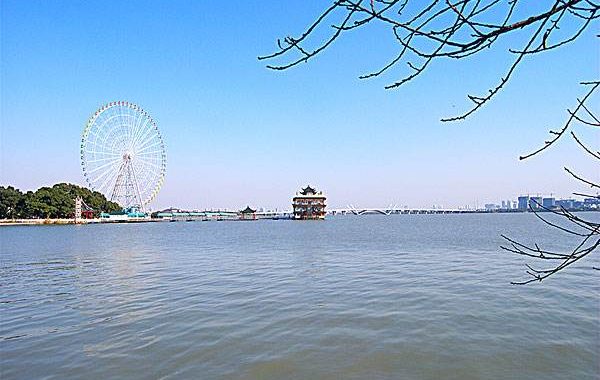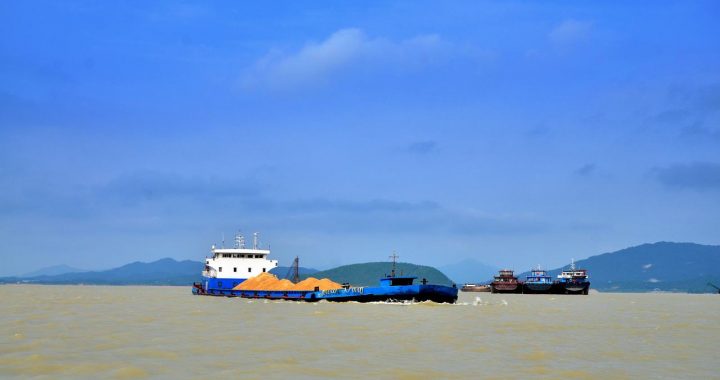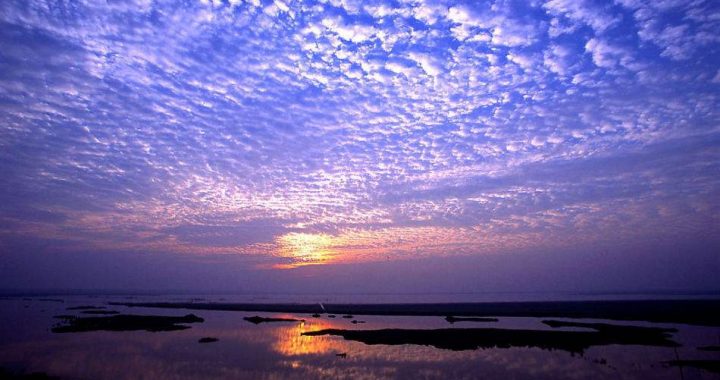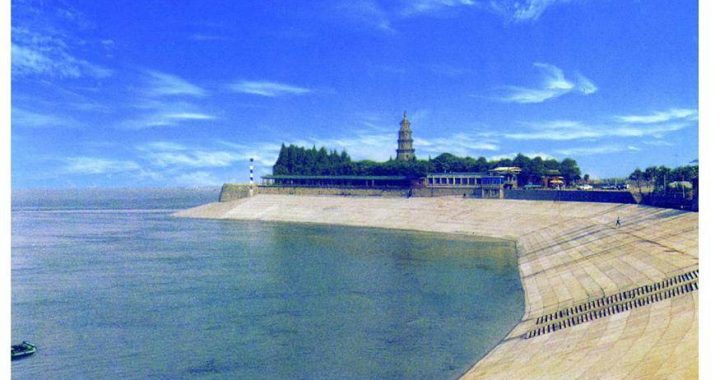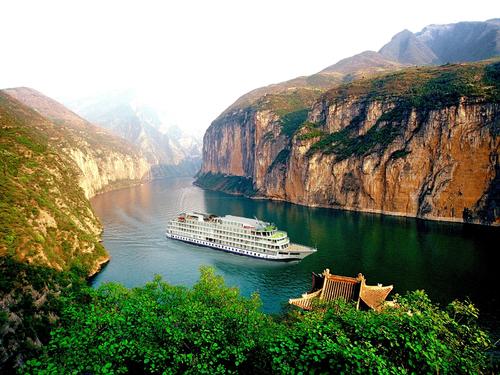Dujiangyan Weir
5 min readIt is the ancestor of irrigation systems in world history;
It is a miracle in the history of irrigation systems;
It makes Chengdu Plain the world-famous
“land of abundance”;
It benefits generations of people in Shu region;
It is Dujiangyan Weir.
About 250 BC,King Zhaoxiang of Qin sent Li Bing to be the sheriff of Shu prefecture(about the area ofSichuan Province today).Upon his arrival,Li Bing heardand saw the miserable situations of people starving to death and having no means to live,so he immediately em-barked on the mission to fight against what caused this disaster-floods of Minjiang River.
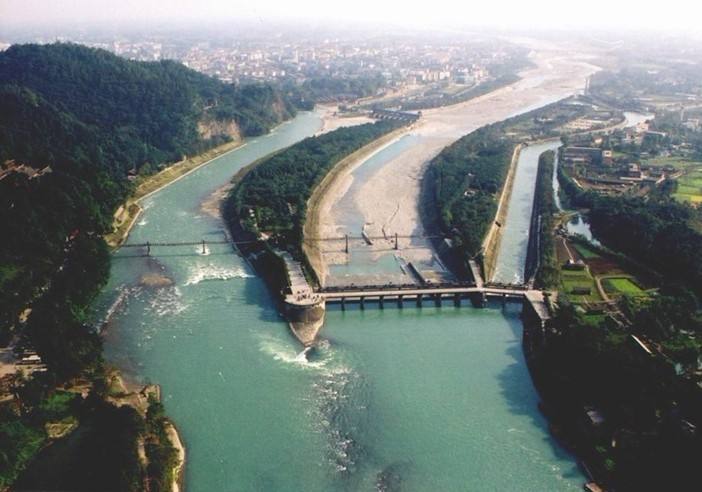
Minjiang River,originating form Minshan Mountain on the southeast boarder of Tibetan Plateau,is a large tributary of the Yangtze River.Minshan Mountain is of very high elevation and the thick snow on the mountain supplies plenty of water for Minjiang River. The surging Minjiang water flushes down. When it reaches Sichuan Basin, where the landform turns flat and the watercourse of Minjiang River widens suddenly, the current flows more slowly and large amount of silt carried from the upper reaches begins to deposit. With the river bed silted up, the abundant water loses bondages and overruns like a bolting wild horse.
In order to understand fully the situation of Minjiang River, Li Bing and his son, together with several local wa-ter-control master-hands reconnoitered on the spot. Under the lead of Li Bing, the local people united and began the grand project to regulate Minjiang River.
There was a mountain called Yulei Mountain which happened to stand in the way of Minjiang River. Being ob-structed, the river could not flow smoothly and often re-sulted in flood on one side of the river and drought on the other side. Conquering great hardship and obstacles, Li Bing the local people, cut forcedly through Yulei Moun-tain, cleared the way for Minjiang River and built Du-jiangyan Weir. After Dujiangyan Weir was completed, Li Bing also organized annual maintenance work to excavate the silt in the river and assure the smooth flow of Minjiang River every year. Li Bing left a simple but crucial injunc-tion for maintaining Dujiangyan Weir,”Dig deep the channels, keep low the embankments”, which were in-scribed in a stone cliff made by later generations to com-memorate Li Bing.
After many dynasties, the name of Dujiangyan Weir was changed for many times; in fact it was not until the Song dynasty (960-1279) that it was called Dujiangyan Weir. After more than two thousand years of enlargement and refinements, Dujiangyan Weir got its scale today.
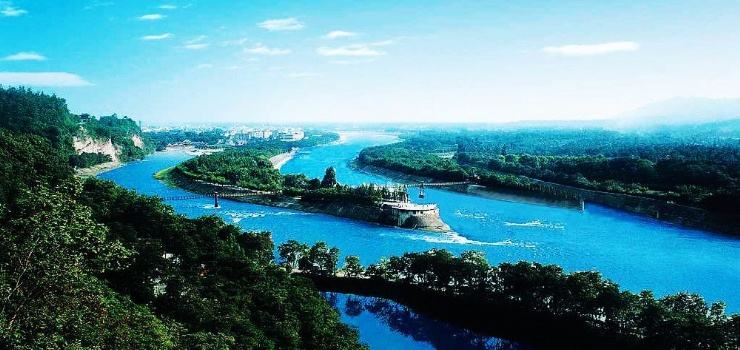
Dujiangyan Weir mainly consists of “Fenshui-Yuzui” (Water-diversion Fish Snout), Fei-Sha Weir(Flying Sand Spillway) and Baoping-Kou (Precious Bottle’s Mouth), which are mainly functioned as water diversion, water spilling and dike-protection, and they are the key projects of Dujiangyan Weir.
“Fenshui-Yuzui”is a project to divert water. It is lo-cated on a round river surface and has a high elevation.
The wedge-shaped jetty-the “Yuzui”-divides Minjiang River into an inner channel and an outer channel. Water diverted into the outer channel carried surplus water and Dujiangyan Weir water in the inner channel is for irrigation.The riverbed of the inner channel is lower than the outer channel,whichwill cause a huge whirlpool before Yuzui when the water volume of the mainstream Minjiang River increases in flood season.Because of the effect of centrifugal force,60% of water flows into the outer channel and 40%into the inner channel,which would protect Chengdu Plain from floods;during low water season,with the water vol-ume of Minjiang River decreasing and the current slowing down,water flows to the lower place,so at that time 40% of water flows into the outer channel and 60%into innerchannel,which meet the irrigation need of spring plowing season.This kind of phenomenon is usually called “four-to-six ratio water diversion”.Dujiangyan Weir ad-mits water and adjusts automatically,and makes Chengdu Plain free of both floods and draught no matter in flood season or low water season.
Yuzui can not only divert water,but also discharge sand.“Two-to-eight ratio sand discharge”describes this function vividly.In flood season,current carries more sand Dujiangyan Weir at BaoPing-Kou than usual. Thanks to the whirlpool before Yuzui,80% of sand is carried away by the 60% of water flowing into the outer channel, and the remaining 20% of sand flowing into the inner channel has to be discharged through Feisha Weir.
Feisha Weir is the spillway of the inner channel, situ-ated near Baoping-Kou. It mainly discharges sand for the inner channel. Baoping-Kou is a water-admitting breach cut in Yulei Mountain, with a width of about 20 meters.
Because it is as narrow as a bottleneck, it gets the name Baoping-Kou(Precious Bottleneck’s Mouth). Baoping-Kou performs the function of water controlling,i.e. adjusting the water volume that enters Chengdu Plain. On its left-side rock there carved water intake scale, to which the height of Feisha Weir refers. Water exceeding a certain mark of Baoping-Kou scale will overflow Feisha Weir and discharge into the outer channel; therefore, the water level of inner channel always keeps a certain height. The water that overflows Feisha Weir will spills into the outer chan-nel with the sand, and till now there is not much sand left in the inner channel, only about 10%, and then clear water flows through Baoping-Kou and irrigate Chengdu Plain.
Fenshui-Yuzui, Feisha Weir and Baoping-Kou really do a systematic work, in which contains profound scientif-ic principles. It is really the pride of Chinese people that there appeared such kind of systematic project in the an-cient China about 2,000 years ago.
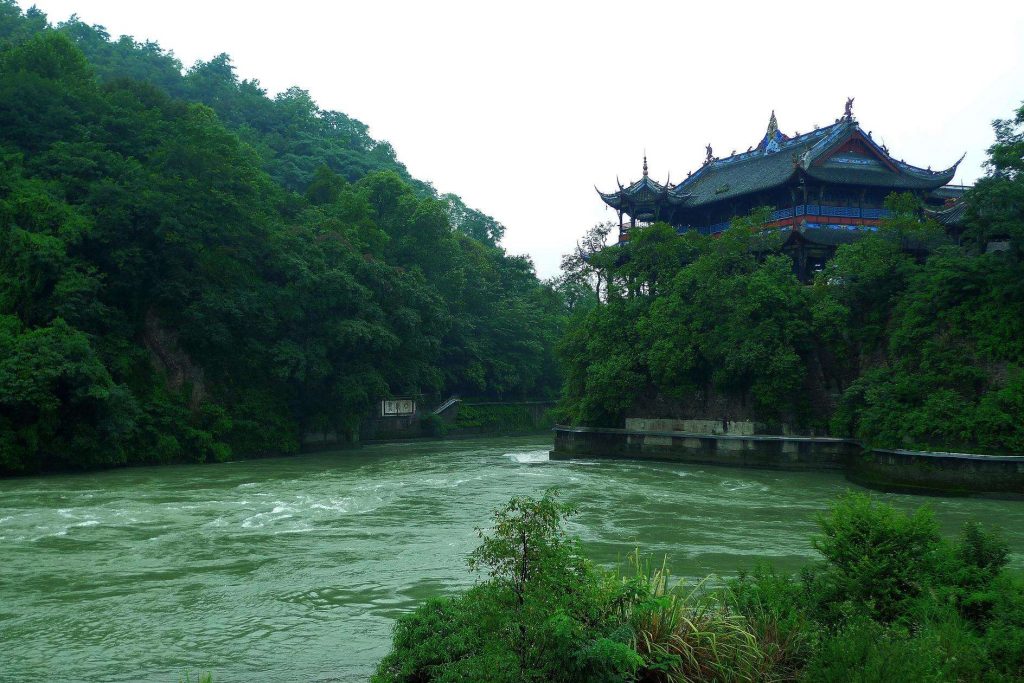
The irrigation area of Dujiangyan Weir is very devel-oped. People made full use of the 200-meter elevation drop between the east and the west, so water diverted intothe inner channel flows eastward naturally, and in its way subdivides into many small channels, gradually forming a fan-shaped network.
Until today, after the re-construction by the Chinese government, the fruits of our ancestors’ wisdom-the great irrigation system Dujiangyan Weir is still guarding people a-long Minjiang River. The great achievements and contribu-tions by Li Bing and his son are also highly praised through generation to generation.
Later there circulated a legend among the people: Li Bing fight with an evil dragon at Guankou day and night, and at last he defeated the dragon and controlled the flood.
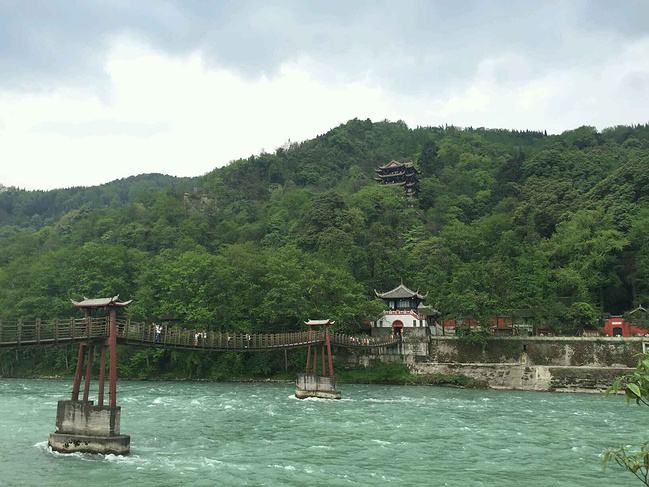
Then,a gnome appeared before him and requested him to face down another evil dragon that was doing mischief at another place. Li Bing went there without a stop. He fought a battle with the evil dragon and finally killed it, rescuing the people living in extreme misery. One day, Li Bing climbed high and looked afar, suddenly celestialwinds blew and celestial music sounded. Li Bing saw a god descend on clouds, and land before him. The god told Li Bing that his well-doing and virtues were proved by the heav-enly world and Jade Em-peror sent him to wel-H. cd come Li Bing to be an immortal in the heavenly world. Then Li Bing and the immortal emissary to-gether flew into the sky and became an immortal. Later, people found that rock on which Li Bing The statueof LiBing stood and named it “Shengxian-Rock”(Ascending-to-Heaven Rock). Not far away from the Shengxian-Rock, people build a tomb for Li Bing and constructed Erwang Temple(“Two Kings Temple'”) for Li Bing and his son.
